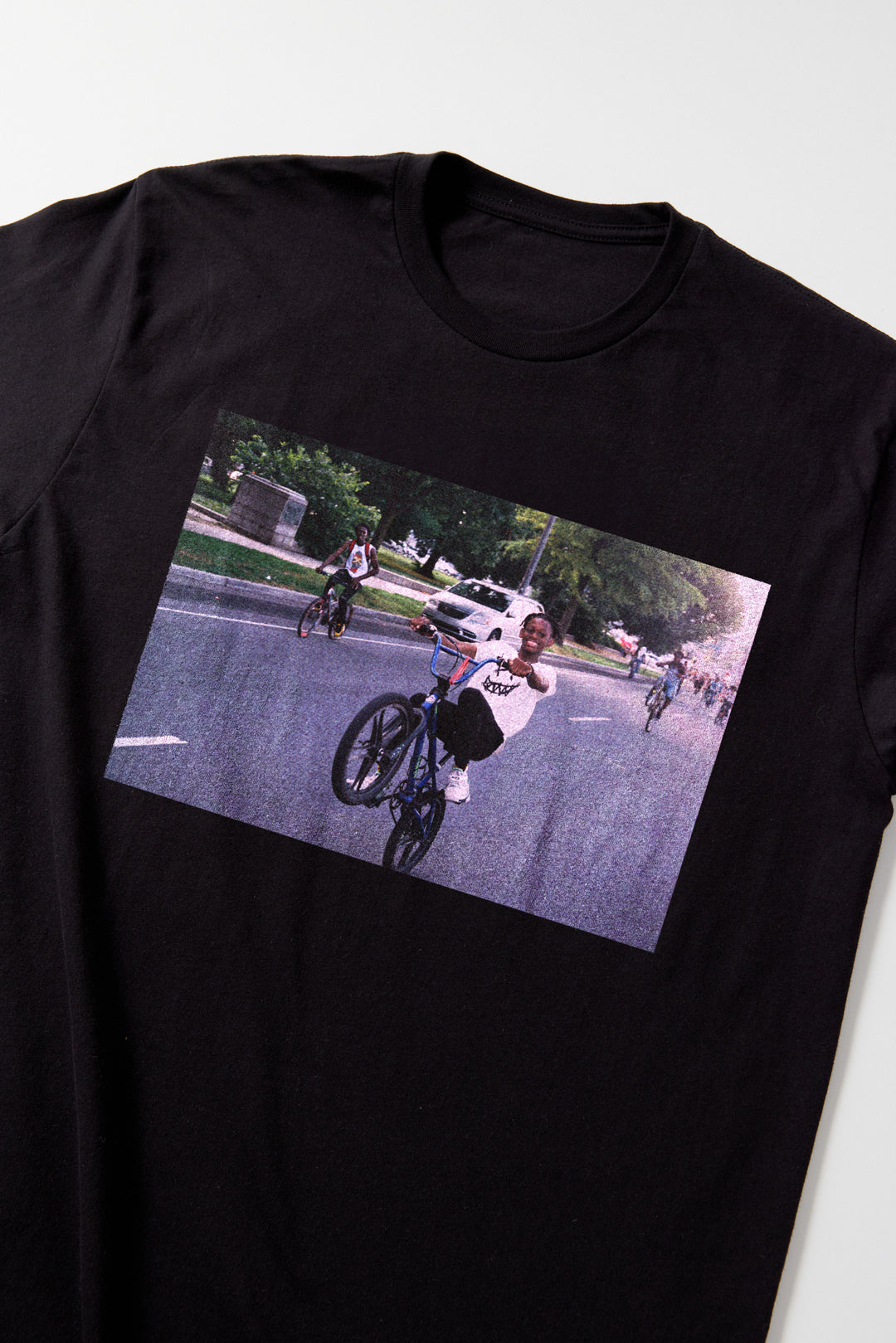What Does It Mean to Be a #CarefreeBlackBoy?
WORDS: KEVIN C. QUIN | ART: LOVEIS WISE
The state of Black masculinity in 2017 is precarious. Mostly through social media, music, and film, attempts at redefining what it means to be a Black man have been celebrated as progressive and revolutionary; the most notable of those efforts undoubtedly being the #CarefreeBlackBoy movement.
With thousands of followers, the #CarefreeBlackBoy movement is just one of many recent efforts at subverting the longstanding stereotype of Black men as aggressive, violent, and overly masculine. The phrase originated when writer Zeba Blay, who also coined the term #CarefreeBlackGirl, published an article that praised Jaden Smith’s “gender-bending” fashions for challenging stereotypes about Black masculinity.The #CarefreeBlackBoy movement does little more than celebrate already-privileged men that temporarily adopt elements of an eccentric style.After increasing media coverage, the hashtag erupted across social media, allowing online communities to make their own contributions to the movement. A quick search of the hashtag will prompt dozens of pictures and videos of Black men in quirky poses adorned with flower crowns while wearing crop tops, all encapsulated in a glittery Snapchat filter. Another aim of the movement is to express a supposed softer side of Black masculinity, with many declaring celebrities like Kanye West, the boys of Rae Sremmurd & Migos, and Chance the Rapper as the cultural pioneers of the #CarefreeBlackBoy movement. Although the aim of the movement is significant in that it seeks to highlight alternative ways of being for Black men, much of the conversation within the movement seemingly centers what we are already familiar with--wealthy, straight celebrities and the ways they embrace this softer side at the mere risk of being called gay. To that end, the #CarefreeBlackBoy movement does little more than celebrate already-privileged men that temporarily adopt elements of an eccentric style, a style that which often originates in gay and queer subcultures, for shock value. More importantly, positioning these celebrities as the de facto pioneers of the movement obscures the efforts of Black and Brown gay and trans* folks who, at the risk of death, embody this style and way of being that is now considered carefree. Understanding the ways Black and Brown gay and trans* folks interrogate gender as a social construction adds new dimensions to the ongoing conversation around Black masculinity, and allows us to rethink exactly what it means to be a #CarefreeBlackBoy.
Black gay men are killed for simply being. Mark Carson was killed for being carefree.In the 1980s, Black and Brown gay and trans* folks actively opposed dominant ideas of gender through ball culture. As an underground subculture, the scene brought together the homeless gay and trans* youth of New York City and Washington D.C.They navigated clubs and warehouses carefully, as they were many times forced to either conform to a rigid performance of masculinity for safety or embrace a more subversive display of masculinity at the risk of physical harm. In the hours of the night, Black and Brown gay and trans* folks formed solidarity through ball competitions where they explored different gender, sexuality, and class identities in the form of drag. As the award-winning documentary Paris is Burning demonstrates, ball competitions aimed to disrupt the oppressive boundaries of gender. By exposing the myth that certain clothing can only be worn by specific genders, exaggerating stereotypical gender performance, and perfecting a fierce walk, contestants were ranked based on how well they could make “real” the identity category they competed in. Categories like “Femme Queen,” which judged the contestant’s ability to perform as what society considers a heterosexual female, led ballroom culture to help radically transform dominant ideas of gender by uncovering its limitlessness and fluidity. While also tackling racism, homophobia, the HIV/AIDS epidemic and poverty, the Black and Brown forerunners of ballroom culture tirelessly sought ways to overcome the oppressive social and political climate that conditioned their lived experiences. Their ability to envision a world free of such boundaries is the ultimate act of being carefree. [caption id="attachment_1945" align="aligncenter" width="1920"]
 Paris Is Burning, 1990[/caption]
Without acknowledgment of the contributions made by Black and Brown gay and trans* folks, critical conversations aiming to deconstruct prevailing masculinity remain stagnant. By positioning celebrities, many of which are financially secure, as the sole pioneers of the #CarefreeBlackBoy movement, Black and Brown gay and trans* folks and the trans* and homophobic violence they continue to face becomes obscured, such as in the case of Mark Carson.
Carson, a 32-year-old gay Black man, took a stroll with a friend one night in New York City dressed in tank tops, cut-off shorts, and boots. The pair encountered a group of men in Greenwich Village who began harassing them by shouting homophobic slurs.
Paris Is Burning, 1990[/caption]
Without acknowledgment of the contributions made by Black and Brown gay and trans* folks, critical conversations aiming to deconstruct prevailing masculinity remain stagnant. By positioning celebrities, many of which are financially secure, as the sole pioneers of the #CarefreeBlackBoy movement, Black and Brown gay and trans* folks and the trans* and homophobic violence they continue to face becomes obscured, such as in the case of Mark Carson.
Carson, a 32-year-old gay Black man, took a stroll with a friend one night in New York City dressed in tank tops, cut-off shorts, and boots. The pair encountered a group of men in Greenwich Village who began harassing them by shouting homophobic slurs.
These celebrities can temporarily appear to be less masculine without repercussion because they have already proven their allegiance to hegemonic masculinity as part of their public image, and have the privilege of returning to it whenever they please.Shortly after escaping the group, Carson was met with a gunshot to the face by one of the hecklers. His slain body collapsed on the concrete while the assailant ran away. Described as a “beautiful, courageous” person who was “used to getting harassed for being openly gay,” Carson ultimately lost his life for being carefree. Not only was his death motivated by homophobia, but it was a particular homophobia against effeminate gay men that openly reject the boundaries of masculinity by challenging what is socially acceptable for how a man should talk, act, and dress. Death is an unfortunate consequence for Black gay men who refuse to care about how the racist, heterosexist society in which we live will perceive them. Black gay men are killed for simply being. Mark Carson was killed for being carefree. Brown and Black gay and trans* folks continue to live truthfully despite being mocked and murdered at alarming rates. To truly intervene in conversations aimed at deconstructing masculinity, proponents of the #CarefreeBlackBoy movement must acknowledge the role of the real pioneers who helped to break down harmful gender roles and racial stereotypes. The celebrities positioned at the forefront of #CarefreeBlackBoy are afforded a set of privileges unlike those who did the critical work of trying to undo the deadly and dominant masculinity decades earlier. These celebrities can temporarily appear to be less masculine without repercussion because they have already proven their allegiance to hegemonic masculinity as part of their public image, and have the privilege of returning to it whenever they please. The same protection cannot be applied to Brown and Black gay and trans* folks who constantly have to care about the dangerous spaces we enter, care about how we present ourselves to remain safe, and care for one another. For us, being a #CarefreeBlackBoy is simply not enough.

